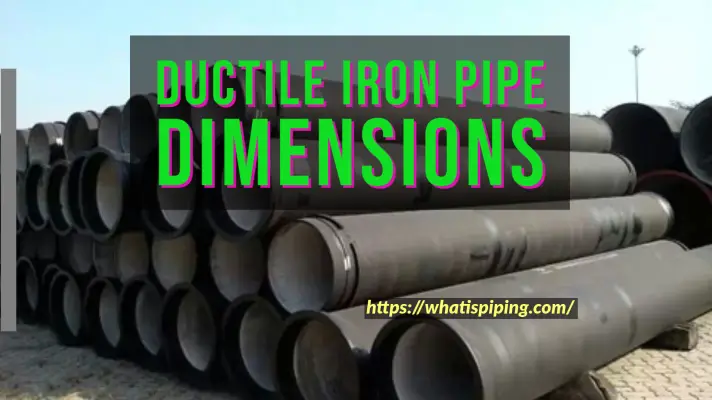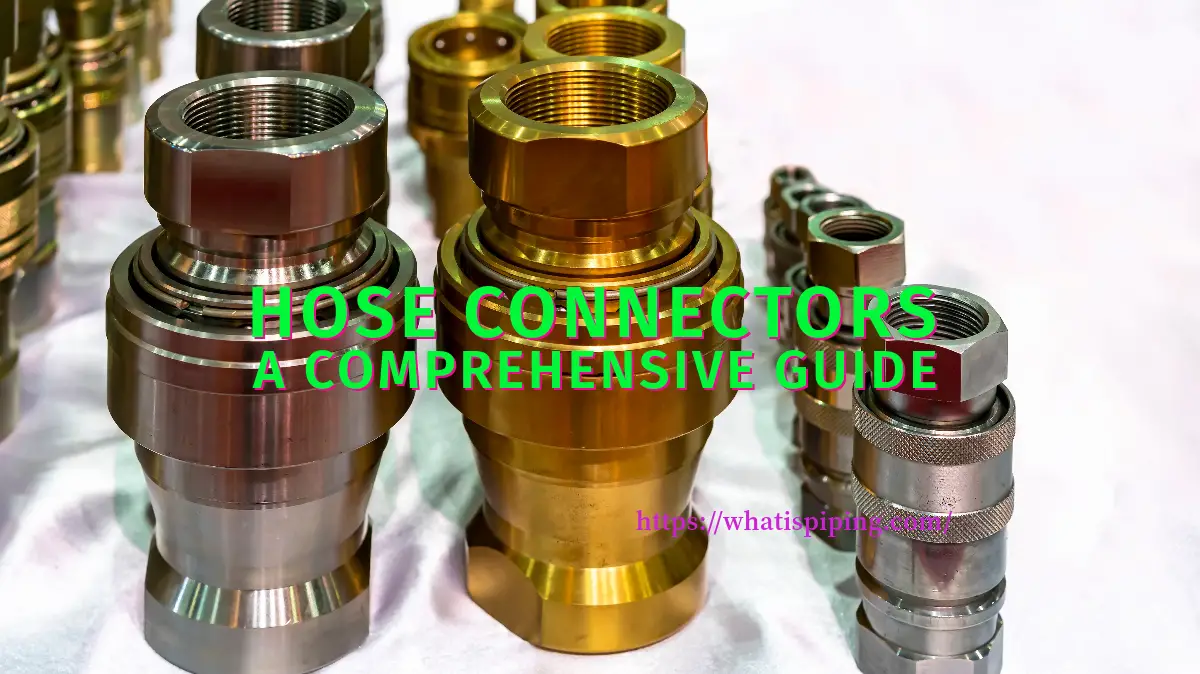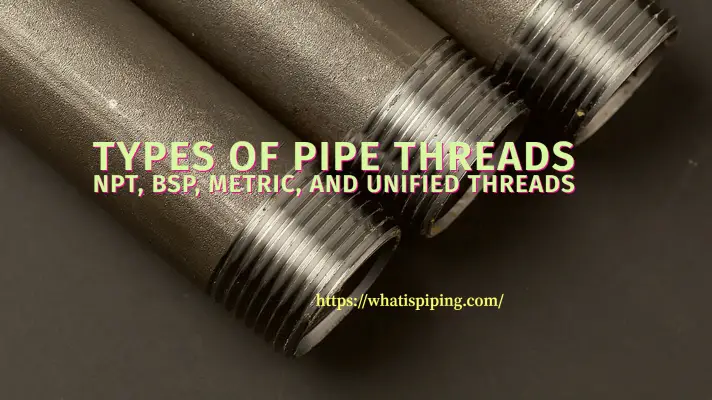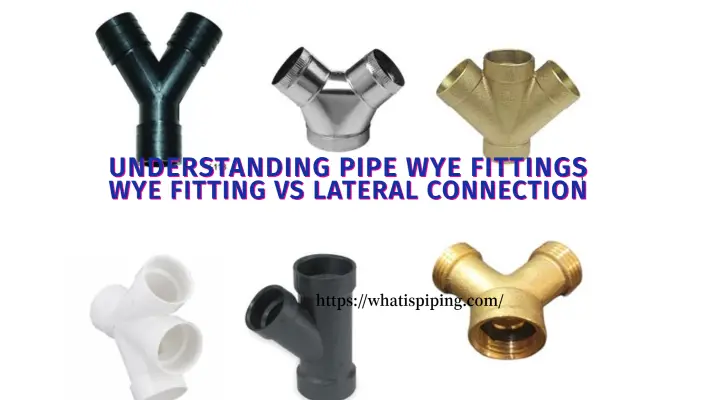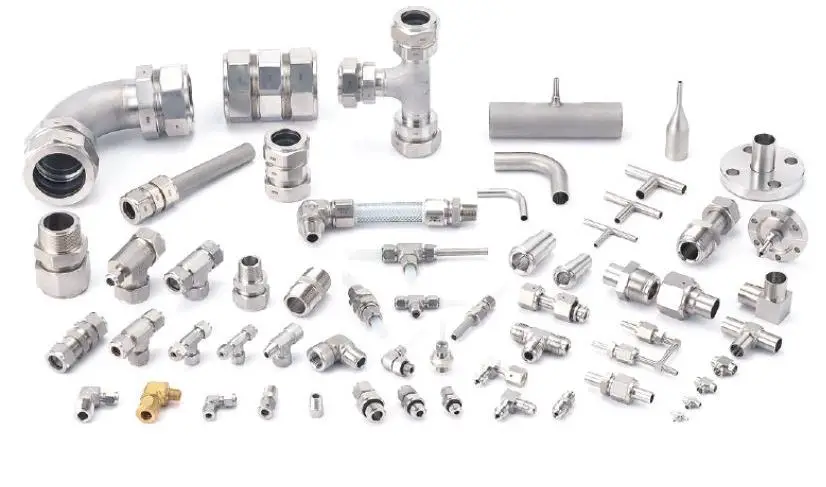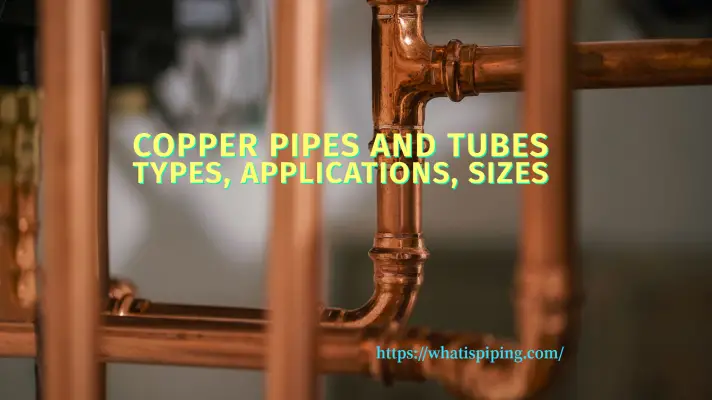Pipe adapters are indispensable components in various industries, offering the flexibility to connect pipes of different sizes, materials, or thread types. These unassuming devices play a crucial role in ensuring the seamless flow of liquids, gases, and other substances in piping, plumbing, and many other industrial projects. In this article, we’ll delve into the world of pipe adapters, exploring their types, applications, and the importance of selecting the right one for your specific needs.
What is a Pipe Adapter?
Pipe adapters, often referred to as pipe connectors or fittings, are devices used to join two or more pipes together. They are designed to facilitate the transition between pipes with varying diameters, thread types, or materials, allowing for a secure and leak-free connection.
They are also known as pipe adaptors in some countries. These fittings are quite similar to pipe couplings, with the main difference being that they connect pipes of different types. Pipe adapters have either male or female IPS threads on one end, while the other end is the opposite gender and is welded or soldered onto a smaller pipe.
Materials for Pipe Adapters
Pipe adapters, like many plumbing and piping components, can be manufactured from various materials to suit different applications, budgets, and environmental conditions. The choice of material for a pipe adapter depends on factors such as the type of fluid or gas being transported, the pressure and temperature conditions, and compatibility with other materials in the system.

Here are some common materials used for pipe adapters:
Brass Pipe Adapters:
Brass pipe adapters are popular due to their excellent corrosion resistance and durability. They are often used in water supply systems, especially for potable water, and in low to medium-pressure applications.
Stainless Steel Pipe Adapters:
Stainless steel pipe adapters are highly corrosion-resistant and suitable for a wide range of applications, including those involving corrosive fluids or high-temperature environments. They are commonly used in the chemical industry and in food processing.
Copper Pipe Adaptors:
Copper adapters are known for their excellent heat conductivity and corrosion resistance. They are often used in plumbing systems for water supply and heating applications.
PVC (Polyvinyl Chloride) Pipe Adapters:
PVC pipe adapters are commonly used in water and wastewater systems, as well as for certain chemical applications. They are lightweight, cost-effective, and resistant to corrosion.
CPVC (Chlorinated Polyvinyl Chloride) Pipe Adapters:
CPVC adapters are similar to PVC but are designed to handle higher temperatures, making them suitable for hot water applications.
Carbon Steel Pipe Adapters:
Carbon steel pipe adapters are strong and durable, making them suitable for high-pressure and high-temperature applications, such as those found in the oil and gas industry.
Aluminum Pipe Adapters:
Aluminum adapters are lightweight and corrosion-resistant, making them suitable for applications where weight is a concern, such as in aircraft and some automotive systems.
Bronze Pipe Adapters:
Bronze adapters are often used in marine and saltwater environments due to their resistance to corrosion. They are also suitable for some plumbing applications.
Nylon Pipe Adapters:
Nylon adapters are lightweight, non-corrosive, and often used in low-pressure applications, such as in pneumatic systems or for connecting plastic pipes.
Polypropylene Pipe Adapters:
Polypropylene adapters are resistant to many chemicals and are often used in chemical processing and wastewater systems.
Ductile Iron Pipe Adapters:
Ductile iron adapters are robust and durable, making them suitable for heavy-duty industrial applications, such as water and sewage systems.
Plastic (Various Types) Pipe Adapters:
Various types of plastic adapters, including ABS, HDPE, and PEX, are used for specific applications in plumbing and water supply systems. Each type of plastic offers different characteristics like flexibility, chemical resistance, and heat resistance.
When selecting a material for a pipe adapter, it’s essential to consider factors such as the type of fluid or gas being transported, temperature and pressure conditions, compatibility with other materials in the system, and cost-effectiveness. Consulting with a plumbing or materials expert can help ensure that you choose the most suitable material for your specific application.
Types of Pipe Adaptors
Adapters are available in various types as mentioned below:
Threaded Pipe Adaptors:
These adaptors have threads on both ends, enabling them to connect pipes with matching threads. Common thread standards include NPT (National Pipe Thread), BSP (British Standard Pipe), and metric threads. Threaded adaptors are widely used in plumbing and industrial applications.
Compression Pipe Adaptors:
Compression adaptors feature a compression ring that tightly seals the connection when the nut is tightened. They are ideal for connecting pipes made of copper, plastic, or other materials. Compression fittings are commonly used in residential plumbing systems.
Barbed Pipe Adaptors:
These adaptors have barbed ends that grip onto the inside of flexible hoses, ensuring a secure connection. Barbed adaptors are often used in irrigation systems, pneumatic applications, and in connecting hoses to pipes.
Flanged Pipe Adaptors:
Flanged adaptors are used to connect pipes with flanged ends. They are particularly prevalent in industrial settings where large pipes and high-pressure applications are common. The flanges provide a strong and leak-resistant connection.
Push-to-Connect Pipe Adaptors:
These adaptors are designed for quick and tool-free installation. They feature a push-to-connect mechanism that securely locks the pipes in place. Push-to-connect fittings are frequently used in DIY plumbing projects and compressed air systems.
Reducing Pipe Adaptors:
Reducing adaptors are used when you need to connect pipes of different sizes. They have one end larger than the other, allowing for a smooth transition between pipes with varying diameters.
Locking Pipe Adapter:
A locking pipe adapter is a type of pipe adapter designed to create a secure and tight connection between two pipes or fittings. It often incorporates a mechanism, such as a locking nut or collar, that can be tightened to firmly hold the adapter in place, preventing unintended disconnection.
Offset Pipe Adapter:
An offset pipe adapter is a specialized pipe fitting used to connect two pipes that are not aligned in a straight line. It allows for a change in the direction or alignment of the pipes, ensuring a smooth flow of fluids or gases even when the pipes are not in a direct line.
Male Pipe Adapter:
A male pipe adapter is a pipe fitting with external threads designed to be inserted into a female-threaded connection or coupling. It is used to convert a female-threaded connection into a male-threaded one, facilitating the attachment of other male-threaded pipes or fittings.
Female Pipe Adapter:
A female pipe adapter is a pipe fitting with internal threads designed to receive and connect to a male-threaded pipe or fitting. It serves as a transition between a male-threaded connection and a female-threaded one, allowing for the secure attachment of pipes or components.
Straight Thread Adapters:
Straight thread adapters are pipe fittings or connectors designed for applications where a leak-resistant, non-tapered connection is required. Instead of relying on threads for sealing, they typically use O-rings, gaskets, or other sealing mechanisms to ensure a tight, leak-free joint. Straight-thread adapters are commonly found in hydraulic and pneumatic systems, where reliable sealing under high pressure is crucial.
Applications of Pipe Adaptors
Some important applications of pipe adapters are as follows
- Plumbing: Pipe adaptors are essential in plumbing projects, whether you’re connecting different types of pipes or transitioning from one size to another. Threaded and compression adaptors are commonly used in residential and commercial plumbing.
- Industrial Use: In industrial settings, pipe adaptors play a pivotal role in connecting various pipes, valves, and equipment. Flanged adaptors are used in high-pressure applications, while threaded adaptors are versatile in general piping systems.
- Automotive and Aerospace: Barbed pipe adaptors are widely used in the automotive and aerospace industries to connect hoses for fluid and air transfer. These adaptors are essential for ensuring the reliability of fluid systems in vehicles and aircraft.
- Irrigation and Agriculture: Barbed and threaded pipe adaptors find applications in irrigation systems and agriculture for connecting pipes, hoses, and sprinklers. These adaptors help distribute water efficiently to crops and gardens.
- DIY Projects: Homeowners and DIY enthusiasts often use pipe adaptors for a wide range of projects, from building custom plumbing systems to constructing garden irrigation setups.
Choosing the Right Pipe Adaptor
Selecting the right pipe adaptor for your project is crucial to ensure a secure and leak-free connection. Consider the following factors:
- Material Compatibility: Ensure that the adaptor material is compatible with the pipes and substances it will come into contact with. For example, use brass adaptors for drinking water applications.
- Thread Type: Match the thread type of the adaptor with that of the pipes you intend to connect. Mixing incompatible thread types can lead to leaks and other issues.
- Size Compatibility: Pay close attention to the diameter of the pipes and select an adaptor that provides a smooth transition between them.
- Application-Specific Adaptors: Some adaptors are designed for specific applications, such as high-pressure systems or corrosive environments. Use these specialized adaptors when needed.
Advantages of Pipe Adapters
Pipe adapters offer several advantages in plumbing, industrial, and fluid transport applications. These advantages make them essential components in many systems. Here are some of the key benefits of using pipe adapters:
- Versatility: Pipe adapters enable the connection of pipes with different sizes, materials, or thread types. This versatility allows for greater flexibility in designing and modifying piping systems.
- Ease of Installation: Most pipe adapters are relatively easy to install, making them suitable for both professional plumbers and DIY enthusiasts. They often require minimal tools and equipment.
- Leak Prevention: Properly installed pipe adapters create secure and leak-free connections. They help maintain system integrity and prevent costly leaks that can lead to property damage or production downtime.
- Adaptation to Changing Needs: Pipe adapters allow for system modifications and expansions without the need to replace entire sections of piping. This adaptability is especially valuable in dynamic industries where requirements may change over time.
- Cost-Effective: Pipe adapters are cost-effective solutions for connecting pipes of different materials or sizes. They eliminate the need for custom-made fittings and reduce material and labor costs.
- Minimized Downtime: In industrial settings, using pipe adapters can significantly reduce downtime during maintenance or repairs. Adapting existing piping to new equipment or components can be done quickly and efficiently.
- Compatibility: Pipe adapters are available in a wide range of materials, ensuring compatibility with various fluids, gases, and environmental conditions. This makes them suitable for diverse applications, including those involving corrosive substances or extreme temperatures.
- Reduced Risk of Cross-Contamination: When transitioning between pipes of different materials, using pipe adapters can help prevent cross-contamination of fluids, ensuring the integrity of the transported substances.
- Customization: Some pipe adapters can be custom-designed to meet specific project requirements, allowing for tailored solutions in unique applications.
- Facilitation of Complex Connections: In situations where complex piping configurations are necessary, such as in HVAC systems or industrial machinery, pipe adapters simplify the connection process, ensuring that all components work together seamlessly.
- Minimized Space Requirements: In tight or confined spaces, pipe adapters can help create compact and efficient connections between pipes, reducing the need for excessive bends or elbows.
- Reliable Sealing: Certain types of pipe adapters, such as those with O-ring seals or compression fittings, offer reliable sealing capabilities, even in high-pressure or high-temperature environments.
- Environmental Benefits: Pipe adapters can contribute to sustainable practices by allowing for the reuse and repurposing of existing pipes and fittings, reducing waste.
Some Common Definitions Associated with Adapter Fittings
Hydraulic Adaptor Fittings:
Hydraulic adaptor fittings are specialized connectors used in hydraulic systems. They allow for the secure connection of hydraulic hoses, pipes, or components, often featuring threads, O-rings, or other sealing mechanisms to ensure a leak-free connection. These fittings are essential for transmitting hydraulic power and fluids in machinery and equipment.
Brake Adaptor Fittings:
Brake adaptor fittings are components used in automotive and brake systems. They facilitate the connection of brake lines and hoses to various brake components, such as calipers, master cylinders, or wheel cylinders. These fittings are crucial for ensuring the safe and reliable operation of a vehicle’s braking system.
Radiator Adaptor Fittings:
Radiator adaptor fittings are connectors used in heating and cooling systems, particularly in automotive radiators. They are designed to connect hoses or pipes to the radiator, allowing for the circulation of coolant to regulate the engine’s temperature. These fittings play a vital role in maintaining proper engine cooling.
Propane Tank Adaptor Fittings:
Propane tank adaptor fittings are components used in propane gas systems. They enable the secure connection of hoses or pipes to propane tanks for the safe transfer of propane gas. These fittings are important for applications such as grills, heaters, and propane-powered appliances.
HDPE Adaptor Fittings:
HDPE (High-Density Polyethylene) adaptor fittings are connectors specifically designed for use with HDPE pipes. HDPE is a thermoplastic material commonly used in water and gas distribution systems. HDPE adaptor fittings allow for the transition from HDPE pipes to pipes or components made of other materials, such as metal or PVC while maintaining a reliable and leak-free connection.
What is a Flange Coupling Adapter?
A flange coupling adapter is a mechanical component used to connect two pipes or pieces of equipment with different flange sizes or types. It serves as an intermediary device that allows for a secure and leak-free connection between two flanges that may not be directly compatible due to variations in size, design, or standards.
Here are some key aspects of flange coupling adapters:
- Flange Compatibility: Flanges come in various sizes and types, and they may not always match perfectly when connecting two components. Flange coupling adapters bridge the gap between two different flange types or sizes.
- Materials: These adapters are typically made of materials that are compatible with the fluids or substances being conveyed through the pipes. Common materials include carbon steel, stainless steel, ductile iron, and others, depending on the application and environmental conditions.
- Design: Flange coupling adapters are designed to ensure a secure and tight fit between the two flanges. They often have bolt holes and alignment features that correspond to the flanges they are connecting.
- Sealing: Proper sealing is essential to prevent leaks in fluid or gas systems. Flange coupling adapters often include gaskets or seals that are placed between the flanges to create a reliable and leak-resistant connection.
- Versatility: These adapters are versatile and can be used in various industries and applications, including water and wastewater systems, oil and gas pipelines, industrial processes, and more.
- Installation: Installing a flange coupling adapter typically involves bolting it between the two flanges that need to be connected. Proper bolt tightening and alignment are crucial for a secure and leak-free connection.
Flange coupling adapters are commonly used in situations where existing infrastructure or equipment has flanges that do not match, such as when replacing or repairing pipes or connecting different parts of a system. They play a vital role in maintaining the integrity and functionality of pipelines and fluid systems by ensuring that connections between components are reliable and leak-proof.
Conclusion
Pipe adaptors are the unsung heroes of the plumbing and industrial worlds, ensuring that pipes of different sizes, materials, and thread types can work together seamlessly. Whether you’re working on a DIY project, an industrial application, or a plumbing task, choosing the right pipe adaptor is crucial for a successful and leak-free connection. Understanding the various types of adaptors and their applications empowers you to make informed decisions, ensuring the efficient flow of liquids and gases in your projects.

